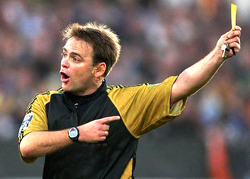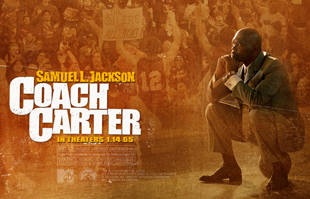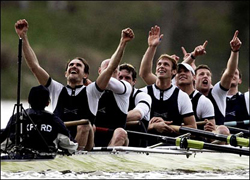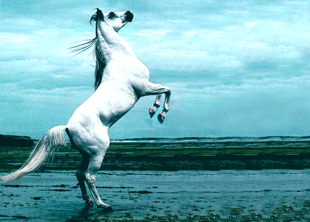![]() In 2011, I made a radio documentary for the BBC called The Sound of Sport. Although this was a radio piece, most of what it concerned itself with was television sports sound.
In 2011, I made a radio documentary for the BBC called The Sound of Sport. Although this was a radio piece, most of what it concerned itself with was television sports sound.
We think of the dominant sound of sports broadcasts as the commentator, but this is really about all the other sounds – the sounds underneath the commentary, the sounds of the event itself, and how they get onto your TV.
As I work in the audio business, I already had an idea of the challenge of this task and the enormous skill of sports outside broadcast engineers, but I thought it would be interesting to try to explain this to a wider audience. It is, after all, a generally under-praised art. But I also wanted to consider our feelings about sport sound in general.
The programme’s presenter, and significant contributor, was Dennis Baxter, the only full-time sound-designer for the Olympics, a job he’s had since 1992. I’m going to quote him often, as well as a number of other people I interviewed.
While making the programme, I came across something that really interested me. This was the idea of ‘reality’ in live broadcasting. If we’re actually at an event, what we hear will probably be very different from what the audience at home hears. At the event we might hear little more than the crowds around us, whereas the TV audience will be delivered a manufactured soundtrack created from many elements, just as it is in a drama or a film. As Dennis Baxter says: ‘It’s about creating exciting entertainment, whatever that takes.’ And ‘whatever that takes’ is the key phrase here, for me. Just how far are we prepared to go, to depart from ‘reality’ to make something entertaining?
World Cup fervour
In 2010, the football World Cup in South Africa had, for many, an unwelcome sonic intruder...
The Vuvuzela – the plastic horn, popular with South African fans – was to become the sound of the games. So many were brought to, and blown at, the matches that the ‘normal’ sounds of the game were largely masked. For the first time in my experience, ordinary people, that is ones who don’t work in audio, began talking about the sound of the event, saying it sounded ‘wrong’. So what did they mean? They meant that it didn’t sound the way a football match was supposed to, how they expected it to. And as we’ll see, meeting expectations is something sports sound designers have to do quite a lot.
The last London Olympics was held in 1948 and its coverage sounded like this...
As you can hear, there’s not much more than commentary, just some distant crowd.
Now let’s speed forward to the 2012 Olympics. Dennis Baxter tells me that they will use around 4,000 microphones to capture event sound. (Not all at the same time, I imagine.)
Dennis started out recording music and for a time owned a studio. But, as he told me, it wasn’t an easy living. So when ESPN, the American TV sports network, started up in the 1980s, he found a new profession – as a sound supervisor for TV sport. He tried to apply the same standards, and some of the same methods, that he was used to in the recording studio, to the task of capturing sounds from the football pitch or basketballl arena. And when he took on the Olympics job in 1992, he brought in the use of a lot more close-miking, a technique borrowed from music recording, where many microphones are used, each placed close to a sound source. In archery, for example, this means putting a microphone right next to the archer for the launch sound and another right near the target for the hit. The whole picture is built by mixing these signals together in appropriate amounts. It allows for far greater definition and control than, say, a single distant microphone high above the action. But more microphones means more circuits to get the signals back, and more inputs on the mixer. But the introduction of digital pathways around events and digital mixing consoles mean that this isn’t the headache it was in the analogue past.
Close miking
Close microphones get very near the object making the sound, but a step further is to attach a microphone to the object itself. In the Olympic gymnastics balance beam events, contact microphones are bonded directly to the beam and respond to its vibrations. So we hear what’s happening inside the beam, the creaks as it stresses under the gymnast’s weight, responding to each tiny shift of their feet.
Even if you stood right next to the beam you’d never hear this. It’s a hidden world. So is this real? It isn’t faked, taken from somewhere else, but it’s an additional sound layer exposed only by using a special, artificial if you like, technique.
When Dennis looked, or rather listened, to the archery coverage from previous Olympics, he noticed something missing. ‘Probably goes back to the movie Robin Hood’, he says. ‘I have a memory of the sound and I have an expectation.’
The launch sound and target hit were there, but what was missing was the swish of the arrow in flight. Most of us would probably agree that this swish is part of our expectation of how an arrow ‘should’ sound. And so, to provide this key extra element, Dennis used a small boundary microphone, laid flat on the ground, underneath the arrow’s path. Now the sequence of release, swish and impact was complete. Listen to this clip from Athens. It’s quite subtle. And the cicadas are quite loud.
That’s an example of meeting the expectations of the listening public.
 We’ve had microphones attached to objects – how about microphones on the players themselves? In UK rugby matches now, its commonplace to include a radio microphone on the referee in the broadcast mix. Senior sound supervisor Bill Whiston says: ‘It’s a wonderful addition to the commentary’. So it adds information and we’re able to understand much more of what the players are going through. It’s almost as if we ourselves are in the game rather than just watching it.
We’ve had microphones attached to objects – how about microphones on the players themselves? In UK rugby matches now, its commonplace to include a radio microphone on the referee in the broadcast mix. Senior sound supervisor Bill Whiston says: ‘It’s a wonderful addition to the commentary’. So it adds information and we’re able to understand much more of what the players are going through. It’s almost as if we ourselves are in the game rather than just watching it.
And microphones on players have even made sports that were, maybe, considered a bit dull on TV, a lot more broadcast-able. An example is curling, which entered the Winter Olympics in 1988. ‘How were we going to make curling exciting?’ asks Dennis Baxter. A good question. Well, the answer was to put wireless microphones on the players. Like this...
Microphones attached to athletes are sure to become more standard. As Dennis says: ‘It puts you right in the game. You can be the player.’
It’s almost as if the real event has become a kind of video game with us, the viewers, playing it.
I spoke to Gordon Durity, a sound designer at the video game company, Electronic Arts. In their EA Sports range there are many emulations of real sports... football, baseball, tennis, boxing etc. And sound plays a big part, as Gordon says: ‘Sound puts you in the actual environment and creates an emotional response. We make it as authentic as possible, but then we try to go beyond. As a player, you expect to hear details you wouldn’t as a TV viewer – the kicks, the scuffs etc.’ Here’s some play sound from one of their soccer games:
That’s a level of detail you could never get in a broadcast of a real match, not practically. But it is, potentially, pushing up our expectations of how broadcast sport could sound. Maybe we’re starting to expect video game level detail and drama.
Gordon talked about creating an emotional response with sound. For one of their boxing titles, they went into a studio to record joints of beef being punched and sticks of celery snapping, as well as actors grunting, sniffing and groaning. Here’s a clip from the EA boxing game:
Now these are the same techniques used by sound-designers working on feature films.
Movie magic
I talked to Rob Nokes, who is a sound effects specialist working in Hollywood. He travels the world recording sound effects for movies and he’s worked on a lot of sport-related films, including Seabiscuit (horse-racing), Miracle (ice hockey), Game of their Lives (soccer) and Coach Carter (basketball). He tries to pin down exactly what sounds might express the real essence of the sport and how it feels to be a player and a spectator. Then he goes out to try and capture those sounds, sometimes at real sports events, and sometimes in special recording sessions. Those sounds then go to the film’s sound editors to help build the soundtrack.
In the basketball film Coach Carter, there was a very specific noise he was asked to try to capture – the ‘ping’ as the ball flies into the air after bouncing. Rob experimented for quite a while with different microphone positions and ways of bouncing the ball until he got it. Here it is:
Rob says: ‘I try to find the next level up, to go heightened reality. Sometimes you have to cheat a sound even bigger to make it cut through. Hollywood sound is definitely more theatrical than real. Just think Fast and Furious or Die Hard.’
 Rob has the luxury of being able to analyse and capture sounds in a controlled environment, and in a way that a live sports sound designer could only dream about.
Rob has the luxury of being able to analyse and capture sounds in a controlled environment, and in a way that a live sports sound designer could only dream about.
But the approach Rob is able to take – along with some of his recording and production techniques – may well cross over into the broadcast sport world.
And there’s no doubt that the level of detail and drama that he brings to the cinema soundtrack raises our expectations of how sport should sound.
Back to the real world...
Since 1829, the universities of Oxford and Cambridge have competed in rowing races on the River Thames in London. In March, I visited the team from Sis Live, the company providing the outside broadcast facilities to the BBC, in their truck on the river bank as they prepared for the 2011 race.
 The race is around four miles. There are microphones at the start, finish, along the bank and on the chase boats. There are also microphones in the competing boats themselves, picking up the sound of the oars, and also a headset microphone on each cox. The coxes are a significant part of each team and their voices are really compelling. And so Andy James had dozens of sources from which to create a mix, favouring different elements through the course of the race. Andy says: ‘Whenever I look at a shot, I want to try and better it with the sound .I want to hear every bit of effort put into that stroke.
The race is around four miles. There are microphones at the start, finish, along the bank and on the chase boats. There are also microphones in the competing boats themselves, picking up the sound of the oars, and also a headset microphone on each cox. The coxes are a significant part of each team and their voices are really compelling. And so Andy James had dozens of sources from which to create a mix, favouring different elements through the course of the race. Andy says: ‘Whenever I look at a shot, I want to try and better it with the sound .I want to hear every bit of effort put into that stroke.
So his mix is largely picture-driven. But director Paul Davies, who was responsible for selecting the camera shots, points out that the opposite can happen. Interesting sound can dictate the shot. So, for example, some lively instructions from one of the coxes might mean they go to a shot of that boat etc…
A mix for an event like the boat race combines a large number of elements, some connected closely with the action itself, and some more as background layers (the clip gives us the isolated cox's mics). This is exactly the same way that a soundtrack for a film or drama is constructed. Now, a spectator on the banks of the Thames would get one perspective, and probably only hear the crowds screaming around them. They would certainly not get the detailed sounds of oars and the colourful language of the coxes. Andy James says: ‘What we can do is convey an atmosphere throughout the whole race for the viewer, so you actually get a much richer and more detailed experience’.
So is this real? Not exactly. Exciting? Definitely.
Dennis Baxter was working on Nascar, American car-racing, when he encountered a problem. In an event inside a stadium, the noise from the engines bounced around and masked pretty much every other sound. So, at the end of the event it was impossible to hear the crowd applauding. His producer complained, ‘I can’t hear the crowd!’ What could he do? He went back to his sound library and found a suitable recording of a crowd swell. The next time he had to mix a race, when it came to the end, he snuck in this pre-recorded crowd, mixing it to sound just right against everything else. The producer was finally happy and praised him for a great job. But when this same producer found out that he’d used a pre-recorded sound – a sample – he accused Dennis of cheating. But Dennis says: ‘Who am I cheating? Am I cheating the audience? No. The audience sees a crowd. The audience has certain expectations. You see a crowd, you hear a crowd’.
Olympic rowing is another problem sport. Helicopters and chase boats, which provide the visual coverage, completely wash out the sound of the boats. If you heard nothing but the chase boats and helicopters, which you actually don’t see on your TV, you would think that was wrong. So Dennis went out before the event and recorded clean oar sounds which he played in from a sampler over the shots of the competition. Real, no. Expected? Yes.
In cross-country skiing, the size of the course is such that coverage by microphones is near impossible. The cameras have zoom lenses that can see a kilometre away, easily covering the course. But how do you match that with sound? As Dennis points out, you’d need 20-30 mics between each camera position to cover the course. And that isn’t practical. Dennis is not a purist: ‘whatever the tool takes to deliver a high-quality, entertaining soundscape, its all fair game’.
In events like these, he uses samplers, playing in pre-recorded ski sounds in perfect sync, from a keyboard.
Senior UK sports sound supervisor Bill Whiston explained that in UK horse-racing TV coverage, it is standard practice to run a galloping horses loop (actually a slowed-down buffalo charge) over the shots rather than mic up the whole course.
‘That’s pretty much a standard thing, and I think it’s probably the same recording they’ve used for years.’
So, to conclude...
Films and video games depict sports in an enhanced and dramatic way, a hyper-real way, if you like. But there’s evidence that their techniques feed back the other way. Gordon Durity of Electronic Arts says: ‘The broadcasters have been listening to what we’ve been doing and then using our techniques back in the actual broadcasts... when you listen to a baseball game now versus ten years ago, you hear these big bat whooshes and arm throws and big fat catcher-mits, because they have mics located very close to capture these sounds’.
And sports sound supervisor Andy James agrees: ‘Many years ago, the audio that people would have been used to expecting from a football match would have been the crowd noise, and that was all. Whereas now they expect to hear every kick, every grunt, every whistle of the referee, because that’s what they get used to hearing on video games, on films... so we’re always trying to match that sort of sound.’
Senior sound supervisor Bill Whiston says: ‘We try and enhance the experience. We tread the middle road between what’s real and what’s unreal.’
 I think we need to think about what we mean by ‘real’. Television is, by its very nature, not real. Broadcasting is man-made magic, and even a big HD picture and surround sound get no way close to the level of sensory stimulation of actually being at an event. That’s why broadcasters have to try harder, they have to compensate for the crudeness of a TV screen and a pair of loudspeakers. But if by using theatrical enhancement, even a bit of trickery, they get closer to expressing through those very compromising loudspeakers how it really feels to be a player or a spectator, then, surely, that is getting closer to some kind of truth.
I think we need to think about what we mean by ‘real’. Television is, by its very nature, not real. Broadcasting is man-made magic, and even a big HD picture and surround sound get no way close to the level of sensory stimulation of actually being at an event. That’s why broadcasters have to try harder, they have to compensate for the crudeness of a TV screen and a pair of loudspeakers. But if by using theatrical enhancement, even a bit of trickery, they get closer to expressing through those very compromising loudspeakers how it really feels to be a player or a spectator, then, surely, that is getting closer to some kind of truth.
There’s no doubt that sports broadcast sound is going to get more detailed and more dramatic, employing all the techniques of film and video games and with more microphones closer to the action and, increasingly, attached to players and athletes.
But perhaps we’re not quite ready to go as far as Rob Nokes did with this final clip... this is an Arabian horse recorded with a radio mic attached to each hoof.
The radio documentary that inspired this post was broadcast in April 2011 and made by Peregrine with Falling Tree Productions for BBC Radio 4. It was also presented to the Institute of Acoustics at Reproduced Sound 2011.
More: http://moving-air.com
More: www.fallingtree.co.uk/about
Contact: